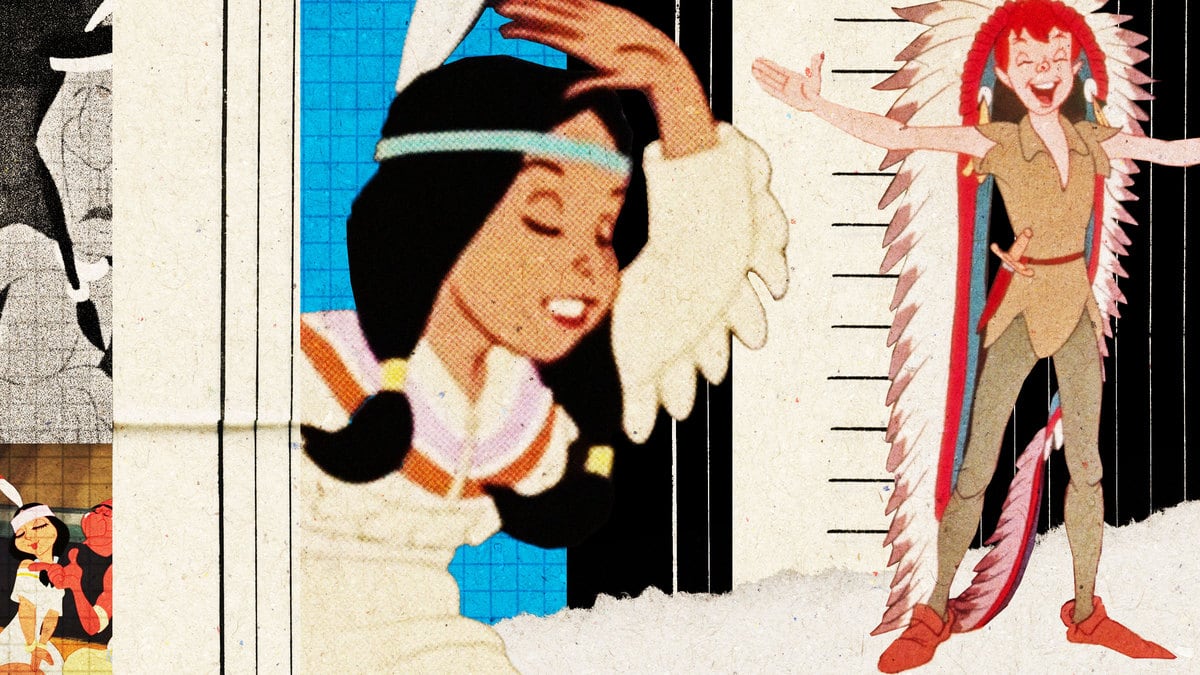Disney’s Peter Pan turned 70 years old this year, and it remains as whimsical and joyful as ever. In scenes like the fantastic “You Can Fly” sequence, in which the Darling family soars across the London skyline with Peter Pan on their way to Neverland, the movie remains evidence of Disney operating at its finest. We, too, feel like anything is possible.
But those feelings of wonder make Peter Pan’s skin-crawlingly racist representations of American Indians even more startling, especially when revisiting the film today. Perhaps it shouldn’t be shocking that these depictions are in a Disney film of this era—this is the same studio that made Song of the South in 1946, less than a decade before Peter Pan’s 1953 release. But the song “What Made the Red Man Red?” really does feel like Disney at its most unabashedly racist, and it taints an otherwise classic film.
“What Made the Red Man Red?” is posed as a celebration, in a scene where the Natives of Neverland are celebrating the return of their princess Tiger Lily. It begins with the Indian chief telling Peter Pan to recount to the other kids the story of the white man. Thankfully, the song isn’t actually sung by our hero Peter; the chief sings it instead. But no matter who sings it, it quickly dives into offensive territory, as it recalls the so-called origins of the “red man.”
Among the questions the song poses are, “What makes the red man red?” “When did he first say, ‘Ugh?’” and “Why does he ask you, ‘How?’” In answering these for the curious children, the song devolves into a portrait of the Natives as primitive, cruel, sexist, and ignorant—openly inviting audiences to make a mockery of American Indians, upon which these characters were based. The biggest of these horrific gut punches comes from the explanation for why the “red man” is red: It’s because one time, one Native blushed when a woman approached him, and “they’ve all been blushing since.”
In the middle of a largely charming movie comes a horrifying representation of vulnerable people, painting them as sex-crazed, overly violent, primitive, and irresponsible. (They also are seen forcing the kids to smoke, as if the rest wasn’t enough.) In just a few short minutes, “What Made the Red Man Red?” takes a rich, diverse history of Indigenous people and eviscerates it, dissociating it from anything that represents reality.

Its historical context makes the song’s placement within the film less shocking. Hollywood has a long history of dehumanizing Indigenous people. This trope was especially prominent in Westerns—extremely popular in the ’40s and ’50s—which depicted American Indians as savages. These “brutal” people cared only about murdering white men and taking advantage of white women and children. These images were rampant in Hollywood and paved the way for Disney to utilize them as well.
While Disney as a studio was no stranger to completely altering aspects of the stories it adapted (Snow White, Pinocchio, Alice in Wonderland, etc.), when it came to making a film based off J.M. Barrie’s Peter Pan story, it chose to stick to the script. The original story contains awful characterizations of Native Americans as well, which made their way into the film via the Natives of Neverland characters. Neither the source material nor the predominant racist of Hollywood at the time, however, excuses how dreadful “What Made the Red Man Red” is, as both a song and a scene.
Disney has seemingly learned from its mistakes in portraying Peter Pan’s Indigenous characters. The 1995 film Pocahontas features Disney’s most prominent representation of Native Americans since Peter Pan. While that film has issues of its own, Pocahontas is infinitely more dimensional than Tiger Lily, who has no discernible agency of her own. Notably, the film even includes the song “Savages,” which takes offensive ideas about Indigenous peoples in order to clarify how grotesque racism is.
That’s not to say Pocahontas or Disney is faultless, but it's encouraging to see any studio attempt to correct the egregious errors of yesteryear. The live-action Barrie adaptation Peter Pan and Wendy, which premiered on Disney+ last week, also includes a much less politically offensive take on the Tiger Lily character; she’s played by an Indigenous actress this time. But none of that can undo or paper over Peter Pan’s own racism from 70 years ago.






